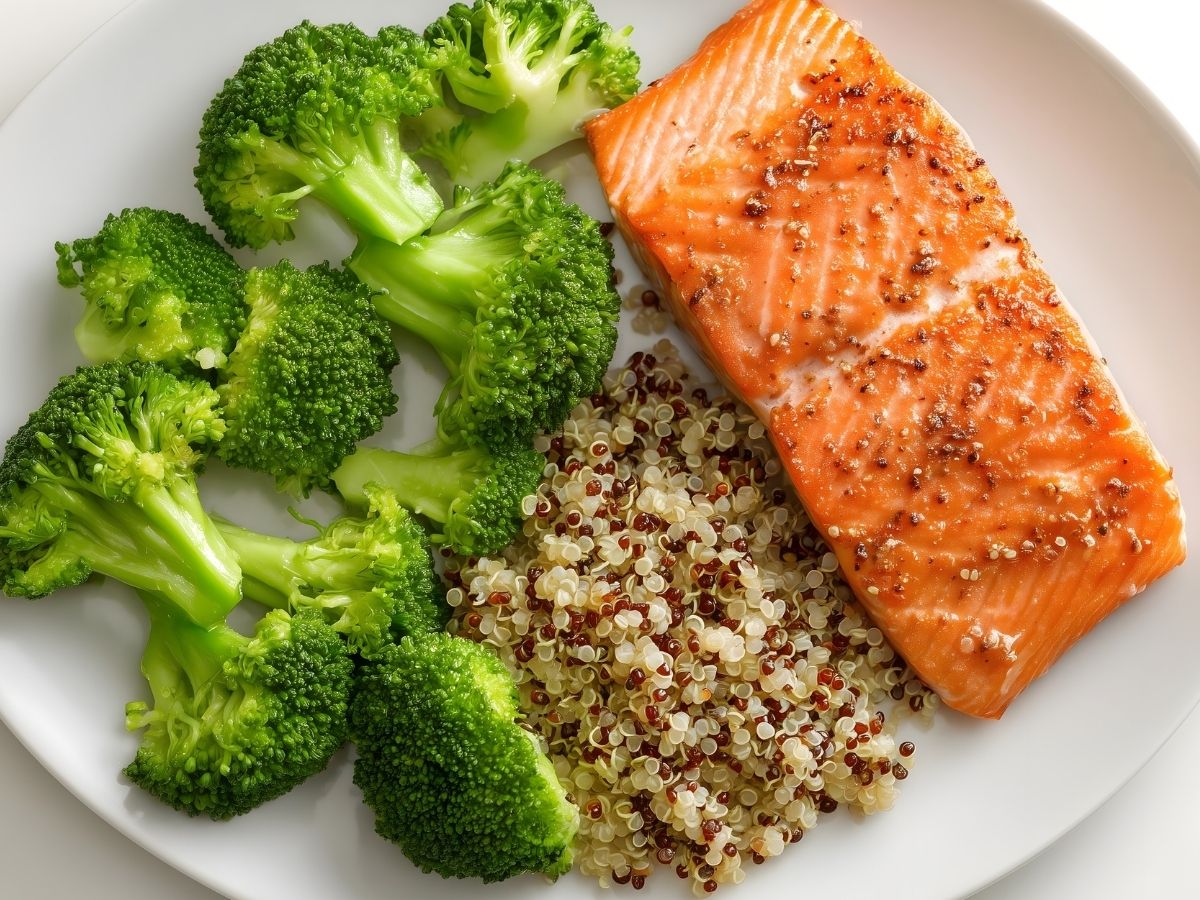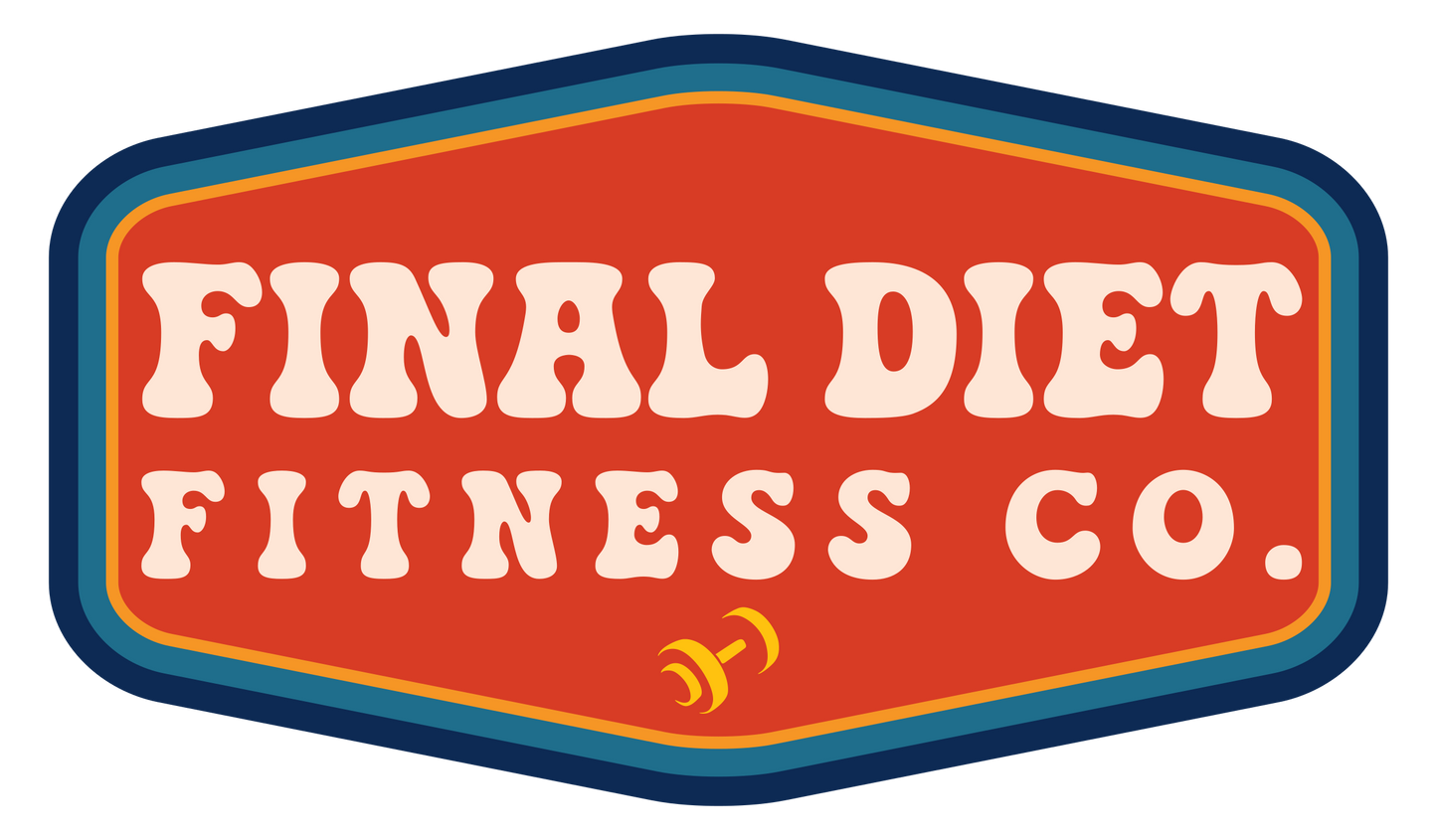
Most people don’t struggle because they lack willpower—they struggle because they lack structure.
The good news? You don’t need to count every calorie or track every macro to eat well.
With a few simple guidelines, you can build balanced meals that fuel your body, keep you full, and align with your goals—whether that’s fat loss, maintenance, or muscle gain.
1. The Balanced Plate Framework
A balanced plate gives your body the nutrients it needs in the right proportions.
The easiest way to visualize it: use your plate as a guide.
For most meals:
-
½ plate = vegetables and/or fruit
- Adds fiber, water, and volume to keep you full.
-
¼ plate = lean protein
- Supports muscle, recovery, and satiety.
-
¼ plate = complex carbohydrates
-
Provides energy for training and daily activity.
-
-
1–2 thumb-sized portions of healthy fat
- Supports hormones and adds flavor.
This approach keeps portions balanced without needing scales, apps, or spreadsheets.
2. Adjusting for Different Goals
You can use the same framework for any goal—just adjust the ratios slightly.
For Fat Loss:
- Emphasize more vegetables, slightly smaller carb portions.
- Keep protein high and fats moderate.
- Example: ½ vegetables, ⅓ protein, ⅙ carbs, small fat serving.
For Maintenance:
- Keep a balanced split across all food groups.
- Maintain consistency in meal timing and portion size
For Muscle Gain:
- Slightly increase carb portions for more training fuel.
- Keep protein consistent, and don’t fear adding healthy fats for extra calories.
Small tweaks—not complete overhauls—make this framework adaptable for every season of your training.
3. Choosing the Right Foods
The framework works best when you fill it with nutrient-dense, minimally processed foods.
Lean Protein Options:
Chicken, fish, eggs, Greek yogurt, lean beef, tofu, tempeh
Complex Carbs:
Rice, quinoa, oats, sweet potatoes, beans, lentils
Vegetables and Fruits:
Spinach, broccoli, peppers, berries, oranges, apples
Healthy Fats:
Avocados, nuts, seeds, olive oil, fatty fish
If 80–90% of your meals use these types of foods, you’ll feel and perform better while naturally managing calories.
4. The Power of Fiber and Volume
Vegetables and fruits are secret weapons for satiety and energy control.
They provide fiber, which slows digestion and helps you feel full on fewer calories.
- Add a serving of veggies to every meal—raw, roasted, or steamed.
- Use fruit as a nutrient-rich snack or dessert instead of high-sugar processed options.
These small changes can dramatically improve fullness and digestion.
5. Keep It Simple and Consistent
Most people overcomplicate nutrition.
You don’t need dozens of recipes or strict rules—just a repeatable structure that fits your routine.
Example day:
- Breakfast: Eggs, oats, fruit
- Lunch: Chicken, rice, veggies, olive oil
- Dinner: Salmon, potatoes, broccoli
- Snack: Greek yogurt with berries and nuts
Simplicity creates consistency—and consistency creates results.
Key Takeaways
- A balanced plate gives you structure without strict tracking.
- Adjust carb and fat portions based on your goal: fat loss, maintenance, or growth.
- Focus on whole, minimally processed foods for lasting energy and fullness.
- Keep meals simple—success comes from repetition, not perfection.
